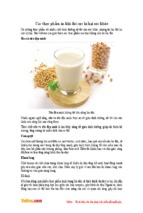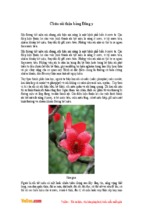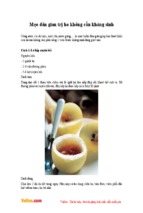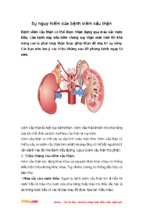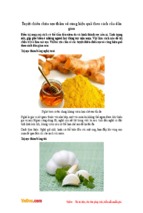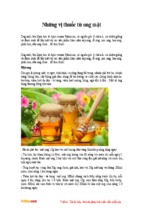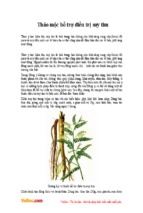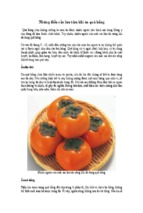Natural Products from Plants
Second Edition
2976_C000.fm Page ii Wednesday, May 31, 2006 10:09 AM
Natural Products from Plants
Second Edition
Leland J. Cseke
Ara Kirakosyan
Peter B. Kaufman
Sara L. Warber
James A. Duke
Harry L. Brielmann
2976_Discl.fm Page 1 Friday, January 6, 2006 11:00 AM
Published in 2006 by
CRC Press
Taylor & Francis Group
6000 Broken Sound Parkway NW, Suite 300
Boca Raton, FL 33487-2742
© 2006 by Taylor & Francis Group, LLC
CRC Press is an imprint of Taylor & Francis Group
No claim to original U.S. Government works
Printed in the United States of America on acid-free paper
10 9 8 7 6 5 4 3 2 1
International Standard Book Number-10: 0-8493-2976-0 (Hardcover)
International Standard Book Number-13: 978-0-8493-2976-0 (Hardcover)
Library of Congress Card Number 2005056059
This book contains information obtained from authentic and highly regarded sources. Reprinted material is quoted with
permission, and sources are indicated. A wide variety of references are listed. Reasonable efforts have been made to publish
reliable data and information, but the author and the publisher cannot assume responsibility for the validity of all materials
or for the consequences of their use.
No part of this book may be reprinted, reproduced, transmitted, or utilized in any form by any electronic, mechanical, or
other means, now known or hereafter invented, including photocopying, microfilming, and recording, or in any information
storage or retrieval system, without written permission from the publishers.
For permission to photocopy or use material electronically from this work, please access www.copyright.com
(http://www.copyright.com/) or contact the Copyright Clearance Center, Inc. (CCC) 222 Rosewood Drive, Danvers, MA
01923, 978-750-8400. CCC is a not-for-profit organization that provides licenses and registration for a variety of users. For
organizations that have been granted a photocopy license by the CCC, a separate system of payment has been arranged.
Trademark Notice: Product or corporate names may be trademarks or registered trademarks, and are used only for
identification and explanation without intent to infringe.
Library of Congress Cataloging-in-Publication Data
Natural products from plants / Leland J. Cseke ... [et al.].-- 2nd ed.
p. cm.
Includes bibliographical references and index.
ISBN 0-8493-2976-0 (alk. paper)
1. Botanical chemistry. 2. Plant products. I. Cseke, Leland J. II. Title.
QK861.N38 2006
581.6'3--dc22
2005056059
Visit the Taylor & Francis Web site at
http://www.taylorandfrancis.com
Taylor & Francis Group
is the Academic Division of Informa plc.
and the CRC Press Web site at
http://www.crcpress.com
2976_C000.fm Page v Wednesday, May 31, 2006 10:09 AM
Dedication
We dedicate this book to Steven F. Bolling, M.D., the first Gayle Halperin Kahn Professor of
Integrative Medicine at the University of Michigan, as well as all the other pioneering individuals
who have devoted their lives to the study, application, and conservation of plants.
2976_C000.fm Page vi Wednesday, May 31, 2006 10:09 AM
2976_C000.fm Page vii Wednesday, May 31, 2006 10:09 AM
Preface
As a result of teaching many undergraduate and graduate students about plant natural products in a wide
range of plant biology courses, the need for a comprehensive yet thorough collection of information on
what kinds of natural products plants produce, including why they produce them, became very apparent.
Currently, such information is contained within thousands of somewhat disjointed reports about the
helpful qualities and toxic effects of different plant species throughout the world. The aim of this second
edition of the book is to help bring more unity and understanding to this complicated and often
contradictory jumble of information. We updated and revised previously presented information and added
more than 50% new topics that deal with plant natural product biochemistry, biotechnology, and molecular biology, as well as new separation techniques and bioassays.
This book is useful to many, including biochemists, natural product chemists, pharmacologists,
pharmacists, and molecular biologists; research investigators in industry, federal labs, and universities;
physicians, nurses, nurse practitioners, and practitioners of integrative medicine; premedical and medical
students; ethnobotanists, ecologists, and conservationists; nutritionists; organic gardeners and farmers;
those interested in herbs and herbal medicine; and even lawyers. With the growing interest in this field
by professionals and the general public alike, it was important for us to produce a book that encompasses
as much information as possible on the natural products produced by plants as well as their importance
in today’s world. We hope that this book helps to meet this need.
Some of the most compelling reasons for writing a book on natural products in plants include the
following:
•
•
•
•
•
•
While there has been a great deal of progress made in understanding plant natural products, a
general lack of knowledge and much misinformation remain about natural products in plants
and their uses by people.
Many of the natural products in plants of medicinal value offer us new sources of drugs that
have been used effectively for centuries in traditional medicine. Many compounds used in
medicine today have original derivatives that were of plant origin.
Plants are sources of poisons, addictive drugs, and hallucinogens. These have importance in
human medicine and in human social action and behavior.
Many people are interested in using natural products from plants for preventive medicine, but
these people must be made aware of potential harmful effects of such compounds.
Plants provide us with thousands of novel compounds that give us medicines, fragrances,
flavorings, dyes, fibers, foods, beverages, building materials, heavy metal chelators important
in bioremediation, biocides, and plant growth regulators.
Knowledge about how and why plants produce such a vast array of metabolites gives us new
insights into how plants use these compounds to deter predators and pathogens, attract and
deter pollinators, prevent other plants from competing with themselves for the same resources,
and defend themselves against environmental stress.
This book was organized to provide relevant and practical information on each of the above topics.
It begins with a discussion of the various types of compounds found in plants (Chapter 1). We then
discuss how and why these compounds are made by plants (Chapter 2). In Chapter 3, we consider how
the synthesis of these compounds is regulated by environmental stresses, biotic factors, biochemical
regulators, and gene expression to provide a better understanding of how these compounds benefit the
plants themselves. Seven new chapters following Chapter 3 were added in this new edition of the book:
Chapter 4 provides information about plant natural products in the rhizosphere (plant root–soil interface
2976_C000.fm Page viii Wednesday, May 31, 2006 10:09 AM
regions). Chapter 5 covers examples of the molecular biology of natural products. In Chapter 6, we
discuss natural product biosynthesis in the pregenomics and genomics eras. A new Chapter 7 deals with
plant biotechnology for the production of natural products. Chapters 8, 9, and 10, respectively, guide
the reader through analytical and preparative separations of natural products, how natural products are
characterized, and bioassays for activity of natural products. In Chapter 11, we discuss the modes of
action of natural products at target sites, using classic examples from medicine and cell biology. Chapter
12 includes information on the uses of plant natural products by humans and the risks associated with
their use. The principle of synergy between separate kinds of compounds from a single plant source and
from more than one plant source is discussed in Chapter 13. Chapter 14 takes a global view of various
strategies that are used to conserve plants that produce natural products of value to humans. Finally, in
a new Chapter 15, we address the relationship between people and plants.
The individual chapters of this book are organized according to the following format: chapter title,
chapter outline, introduction to the chapter, chapter topics and text, conclusions (take-home lessons), and
references cited for further reading. In addition, some of the chapters contain boxed essays written by
experts in the field to bring diversity to the topics. We chose this format in order to aid the reader in
comprehending the material and to stimulate one to probe the chapter topics further. The Appendix to this
book (“Information Retrieval on Natural Products in Plants”) helps one to embark on the latter endeavor.
Regarding terminology pertaining to plant metabolites, we often encounter the terms “primary
metabolite” and “secondary metabolite” in the literature. Traditionally, primary metabolite refers to
nucleic acids, amino acids, proteins, lipids, carbohydrates, and various energetic compounds falling
within the primary metabolic pathways of each cell. These compounds are essential for plant growth,
development, reproduction, and survival. Secondary metabolite is a term that was originally coined to
describe compounds that were not thought, at the time, to be essential to plant function. This old idea,
however, cannot be defended on strictly chemical grounds, because, apparently, all natural products
produced by plants have some survival value to the plant. Thus, the modern use of the term “secondary
metabolite” typically refers to those compounds of low molecular weight that are often restricted to
specific plant families and genera. These compounds may be important for pollination, attraction and
deterrence of predators, or defense against pathogenic fungi and bacteria, or they may be essential for
plant survival in stressful environments.
In this book, we attempt to avoid the terminology of “primary” and “secondary” by using simply
“metabolite,” “product,” or “compound” wherever possible. However, because the traditional terms
“primary metabolite” and “secondary metabolite” are still used widely in the literature as acceptable
terminology, we continue to use them when we refer to “secondary metabolism” in the traditional sense
(see Chapters 4, 6, and 7 for examples).
2976_C000.fm Page ix Wednesday, May 31, 2006 10:09 AM
The Editors
Leland J. Cseke, Ph.D., earned a doctorate in plant cellular and molecular biology through the Department of Molecular, Cellular, and Developmental Biology at the University of Michigan, Ann Arbor. His
dissertation research included the molecular biology, evolution, and biotechnological applications of
terpenoid scent compound production in Clarkia and Oenothera species in the laboratory of Dr. Eran
Pichersky. Currently, Dr. Cseke is a research assistant professor in the Department of Biological Sciences
at the University of Alabama, Huntsville, where he works in conjunction with Dr. Gopi K. Podila in a
large team effort to determine the molecular mechanisms of keystone species in forest ecosystem
responses to environmental perturbations. The DOE-funded project represents an “Integrated Functional
Genomics Consortium to Increase Carbon Sequestration in Poplar Trees” through the study of aspen
Free-Air Carbon dioxide Enrichment (aspen FACE research). In addition, Dr. Cseke investigates the
activity of aspen (Populus tremuloides) MADS-box genes in wood development. Similarly, Dr. Cseke
spent several years as a research assistant professor at Michigan Technological University working to
discover the functionality of floral-specific MADS-box genes in aspen flower development. Dr. Cseke
was also a postdoctoral fellow in the Department of Plant Sciences at the University of Arizona in the
laboratory of Dr. Rich Jorgensen. There, he worked to elucidate the factors involved in functional sense
and antisense suppression of genes involved in anthocyanin biosynthesis. Dr. Cseke’s interests include
the biosynthesis of plant chemical products, their uses by humans, and the study of the global effects
of transgenes on plant metabolism. This led to his coauthoring the first edition of Natural Products from
Plants (CRC Press, 1999). In addition, Dr. Cseke has done some work in the study of possible methods
for improving separation and enhancing the biosynthesis of the cancer-fighting diterpene, taxol, in Taxus
species in the laboratory of Dr. Peter Kaufman, and his knowledge of such subjects has been directed
toward the teaching of classes emphasizing biotechnology and the chemical principles of biology.
Ara Kirakosyan, Ph.D., is associate professor of biology at Yerevan State University, Armenia, and is
currently research investigator at the University of Michigan Integrative Medicine program (UMIM).
He received a Ph.D. in molecular biology from Yerevan State University, Armenia in 1993. His research
fields focus on the phytochemistry and molecular biology of medicinal plants. His research interests
include plant cell biotechnology to produce enhanced levels of medicinally important secondary metabolites, and metabolic engineering based on the integration of functional genomics, metabolomics, transcriptomics, and large-scale biochemistry. He carried out postdoctoral research in the Department of
Pharmacognosy at Gifu Pharmaceutical University, Gifu, Japan, under the supervision of Prof. Kenichiro
Inoue. The primary research topic was molecular biology of glycyrrhizin and a sweet triterpene and
unraveling an oxidosqualene synthase gene encoding β-amyrin synthase in cell cultures of Glycyrrhiza
glabra. In addition, he held several research investigator positions in Germany. The first was under
collaborative grant project DLR, at Heinrich-Heine-University, Düsseldorf. The research concerned a
lignan anticancer project (the production of cytotoxic lignans from Linum [flax]) under the supervision
of Prof. Dr. W.A. Alfermann. The second involved a carbohydrate-engineering project, as he was a
DAAD Fellow in the Institute of Plant Genetics and Crop Plant Research (IPK) Gatersleben, under the
supervision of Prof. Dr. Uwe Sonnewald. Another collaborative grant project on plant cell biotechnology
involved the production of dianthrones in cell/shoot cultures of Hypericum perforatum (St. John’s wort);
this project was carried out with Dr. Donna Gibson at the U.S. Department of Agriculture (USDA),
Agricultural Research Service, Plant Protection Research Unit, U.S. Plant, Soil, and Nutrition Laboratory,
Ithaca, NY. In 2002, he was a Fulbright Visiting Research Fellow at the University of Michigan,
Department of Molecular, Cellular, and Developmental Biology in the Laboratory of Prof. Peter Kaufman. Dr. Kirakosyan is author of several chapters in five books and principal author of more than 50
peer-reviewed research publications. Dr. Kirakosyan is a full member of the Phytochemical Society of
2976_C000.fm Page x Wednesday, May 31, 2006 10:09 AM
Europe and the European Federation of Biotechnology. He received several awards, fellowships, and
research grants from the United States, Japan, and the European Union.
Peter B. Kaufman, Ph.D., is a professor of biology emeritus in the Department of Molecular, Cellular,
and Developmental Biology (MCDB) at the University of Michigan and is currently senior scientist,
University of Michigan Integrative Medicine program (UMIM). He received his B.Sc. in plant science
from Cornell University in Ithaca, New York, in 1949 and his Ph.D. in plant biology from the University
of California, Davis, in 1954 under the direction of Professor Katherine Esau. He did postdoctoral
research as a Muellhaupt Fellow at Ohio State University, Columbus. He has been a visiting research
scholar at the University of Calgary, Alberta, Canada; University of Saskatoon, Saskatoon, Canada;
University of Colorado, Boulder; Purdue University, West Lafayette, Indiana; USDA Plant Hormone
Laboratory, BARC-West, Beltsville, Maryland; Nagoya University, Nagoya, Japan; Lund University,
Lund, Sweden; International Rice Research Institute (IRRI) at Los Baños, Philippines; and Hawaiian
Sugar Cane Planters’ Association, Aiea Heights. Dr. Kaufman is a fellow of the American Association
for the Advancement of Science and received the Distinguished Service Award from the American Society
for Gravitational and Space Biology (ASGSB) in 1995. He served on the editorial board of Plant
Physiology for 10 years and is the author of more than 220 research papers. He has published eight
professional books to date and taught popular courses on Plants, People, and the Environment, Plant
Biotechnology, and Practical Botany at the University of Michigan. He received research grants from
the National Science Foundation (NSF), the National Aeronautics and Space Administration (NASA),
the U.S. Department of Agriculture (USDA) BARD Program with Israel, National Institutes of Health
(NIH), Xylomed Research, Inc., and Pfizer Pharmaceutical Research. He produced, with the help of
Alfred Slote and Marcia Jablonski, a 20-part TV series entitled, “House Botanist.” He was past chairman
of the Michigan Natural Areas Council (MNAC), past president of the Michigan Botanical Club (MBC),
and former Secretary-Treasurer of the American Society for Gravitational and Space Biology (ASGSB).
He is currently doing research on natural products of medicinal value in plants at the University of
Michigan Medical School in the laboratory of Stephen F. Bolling, M.D., and serves on the research staff
of UMIM.
Sara Warber, M.D., is a family physician with a long-standing interest in botanical medicine that
predates her entrance into medical school. She completed a combined residency and fellowship in family
medicine at the University of Michigan. She was a Robert Woods Johnson Clinical Scholars Program
Fellow at the university. She is currently co-director of UMIM (University of Michigan Integrative
Medicine program) and assistant professor in the Department of Family Practice Medicine at the
University of Michigan. Her interests include research into the safe and efficacious use of herbal
medicines. She is collaborating on research and education related to the use of other complementary
and alternative modalities in the optimization of health. In addition, Dr. Warber is designing communityoriented research to facilitate improved health through better understanding of cultural dimensions and
traditional ways of healing. She lives with her husband and two sons in the Ann Arbor, Michigan area
and enjoys spending time in the many remaining wild habitats surrounding the Great Lakes.
James A. Duke, Ph.D., retired from the USDA where he served as an economic botanist for 30 years.
In retirement, he served five years with Nature’s Herbs and two years with Allherb.com. He is an adviser
to or trustee for the Amazon Center for Environmental Education and Research (ACEER), American
Botanical Council (ABC), and conducts ecotours in Maine and Peru. He is the author of more than 25
books, the best seller, The Green Pharmacy (now in six languages); his most recent, the CRC Handbook
of Medicinal Plants (second edition); and the CRC Handbook of Medicinal Spices. Dr. Duke graduated
Phi Beta Kappa from the University of North Carolina at Chapel Hill in 1961 and was awarded a
distinguished alumnus award in 2002. Before joining the USDA, he spent several years in Central and
South America studying neotropical ethnobotany and living with various ethnic groups while closely
observing their deep dependence on forest products. He is very interested in natural foods and nutritional
approaches to preventive medicine and spent 2 years advising the Designer Food Program at the National
Institutes of Health (NIH) and 5 years with the National Cancer Institute’s (NCI) cancer screening
2976_C000.fm Page xi Wednesday, May 31, 2006 10:09 AM
program. He is a popular lecturer on the subjects of ethnobotany, herbs, medicinal plants, and new crops
and their ecology, and has taped dozens of TV and radio shows. Dr. Duke is now an emeritus adjunct
professor in herbal medicine at the Tai Sophia Institute, which frequently holds classes in his Green
Farmacy Garden, Fulton, Maryland, where he grows more than 300 medicinal plants. The USDA
maintains his very useful phytochemical and ethnobotanical databases online (www.ars-grin.gov/duke/).
Harry Brielmann, Ph.D., received his Ph.D. in synthetic organic chemistry from Wesleyan University,
Middletown, Connecticut, in 1994. He spent the following year investigating marine natural products
as a postdoctoral fellow for Professor Paul Scheuer. His next postdoctoral position was in the area of
organometallic chemistry for Professor John Montgomery at Wayne State University, Detroit. Dr.
Brielmann then spent 7 years (1998 to 2005) as a medicinal chemist at Neurogen Corporation in
Branford, Connecticut. Dr. Brielmann currently teaches chemistry at Glastonbury High School in
Glastonbury, Connecticut.
2976_C000.fm Page xii Wednesday, May 31, 2006 10:09 AM
2976_C000.fm Page xiii Wednesday, May 31, 2006 10:09 AM
Contributors
V.S. Bhinu University of Tsukuba, Tsukuba, Ibaraki, Japan
Mary Jo Bogenschutz-Godwin Kaaawa, Hawaii
Harry L. Brielmann Gastonbury High School, Gastonbury, Connecticut
Leland J. Cseke University of Alabama, Huntsville, Alabama
Feng Chen University of Tennessee, Knoxville, Tennessee
P. Dayanandan Madras Christian College, Tambaram, Madras, India
James A. Duke Green Farmacy Garden, Fulton, Maryland
James E. Hoyt University of Michigan, Ann Arbor, Michigan
Katherine N. Irvine De Montfort University, Leicester, United Kingdom
Masilamani Jeyakumar Cordlars Pte Ltd., Singapore
Peter B. Kaufman University of Michigan, Ann Arbor, Michigan
Ara Kirakosyan University of Michigan, Ann Arbor, Michigan
Ari Kornfeld Humboldt State University, Arcata, California
Carl Li State University of New York at Buffalo, Buffalo, New York
Hong Lin USDA Agricultural Research Service, Crop Diseases, Pests and Genetics,
Parlier, California
Casey R. Lu Humboldt State University, Arcata, California
Maureen McKenzie DENALI BioTechnologies, L.L.C., Soldotna, Alaska
Kothandarman Narasimhan National University of Singapore, Singapore
Sheela Reuben National University of Singapore, Singapore
William N. Setzer University of Alabama in Huntsville, Huntsville, Alabama
Mitchell Seymour University of Michigan, Ann Arbor, Michigan
Kevin Spelman Tai Sophia Institute, Laurel, Maryland
2976_C000.fm Page xiv Wednesday, May 31, 2006 10:09 AM
Sanjay Swarup National University of Singapore, Singapore
Bernhard Vogler University of Alabama in Huntsville, Huntsville, Alabama
Sara L. Warber University of Michigan, Ann Arbor, Michigan
Joshua S. Yuan
University of Tennessee, Knoxville, Tennessee
2976_book.fm Page xv Wednesday, May 24, 2006 1:02 PM
Contents
1
Phytochemicals: The Chemical Components of Plants ...................................1
Harry L. Brielmann, William N. Setzer, Peter B. Kaufman, Ara Kirakosyan,
and Leland J. Cseke
2
How and Why These Compounds Are Synthesized by Plants ....................51
Leland J. Cseke, Casey R. Lu, Ari Kornfeld, Peter B. Kaufman, and
Ara Kirakosyan
3
Regulation of Metabolite Synthesis in Plants.............................................. 101
Leland J. Cseke and Peter B. Kaufman
4
Plant Natural Products in the Rhizosphere .................................................. 143
V.S. Bhinu, Kothandarman Narasimhan, and Sanjay Swarup
5
Molecular Biology of Plant Natural Products .............................................. 165
Sheela Reuben, Leland J. Cseke, V.S. Bhinu, Kothandarman Narasimhan,
Masilamani Jeyakumar, and Sanjay Swarup
6
The Study of Plant Natural Product Biosynthesis in the Pregenomics
and Genomics Eras ........................................................................................... 203
Feng Chen, Leland J. Cseke, Hong Lin, Ara Kirakosyan, Joshua S. Yuan,
and Peter B. Kaufman
7
Plant Biotechnology for the Production of Natural Products .................... 221
Ara Kirakosyan
8
Traditional, Analytical, and Preparative Separations of Natural
Products ............................................................................................................. 263
Leland J. Cseke, William N. Setzer, Bernhard Vogler, Ara Kirakosyan,
and Peter B. Kaufman
9
Characterization of Natural Products ............................................................ 319
Bernhard Vogler and William N. Setzer
10 Bioassays for Activity ...................................................................................... 389
William N. Setzer and Bernhard Vogler
11
Modes of Action at Target Sites ..................................................................... 415
Sara L. Warber, Mitchell Seymour, Peter B. Kaufman, Ara Kirakosyan,
and Leland J. Cseke
2976_book.fm Page xvi Wednesday, May 24, 2006 1:02 PM
12 The Uses of Plant Natural Products by Humans and Risks
Associated with Their Use .............................................................................. 441
Peter B. Kaufman, Ara Kirakosyan, Maureen McKenzie, P. Dayanandan,
James E. Hoyt, and Carl Li
13 The Synergy Principle at Work with Plants, Pathogens, Insects,
Herbivores, and Humans................................................................................. 475
Kevin Spelman, James A. Duke, and Mary Jo Bogenschutz-Godwin
14 Plant Conservation ........................................................................................... 503
Mary Jo Bogenschutz-Godwin, James A. Duke, Maureen McKenzie, and
Peter B. Kaufman
15 Relationship between People and Plants ...................................................... 535
Sara L. Warber and Katherine N. Irvine
Appendix
Information Retrieval on Natural Products in Plants .......................................... 547
Index of Chemicals ................................................................................................... 553
Index of Plant Species and Common Names ........................................................ 575
Subject Index............................................................................................................. 587
2976_book.fm Page 1 Wednesday, May 24, 2006 1:02 PM
1
Phytochemicals: The Chemical Components of Plants
Harry L. Brielmann, William N. Setzer, Peter B. Kaufman, Ara Kirakosyan,
and Leland J. Cseke
CONTENTS
1.1
1.2
1.3
1.4
1.5
1.6
Introduction ...................................................................................................................................... 2
Lipids and Derivatives...................................................................................................................... 3
1.2.1 Hydrocarbons ...................................................................................................................... 3
1.2.1.1 Saturated Hydrocarbons....................................................................................... 4
1.2.1.2 Unsaturated Hydrocarbons................................................................................... 4
1.2.2 Functionalized Hydrocarbons ............................................................................................. 6
1.2.2.1 Halogenated Hydrocarbons.................................................................................. 6
1.2.2.2 Alcohols ............................................................................................................... 6
1.2.2.3 Sulfides and Glucosinolates................................................................................. 7
1.2.2.4 Aldehydes and Ketones ....................................................................................... 7
1.2.2.5 Esters .................................................................................................................... 8
1.2.2.6 Fatty Acids ........................................................................................................... 8
1.2.3 Terpenes............................................................................................................................. 10
1.2.3.1 Hemiterpenes: C5 ............................................................................................... 12
1.2.3.2 Monoterpenes: C10 ............................................................................................. 12
1.2.3.3 Sesquiterpenes: C15 ............................................................................................ 14
1.2.3.4 Diterpenes: C20 ................................................................................................... 14
1.2.3.5 Triterpenes: C30 .................................................................................................. 17
1.2.3.6 Tetraterpenes: C40 ............................................................................................... 19
Aromatics ....................................................................................................................................... 19
1.3.1 Tetrapyrroles...................................................................................................................... 19
1.3.2 Phenols .............................................................................................................................. 19
1.3.2.1 Simple Phenols................................................................................................... 20
1.3.2.2 Phenol Ethers ..................................................................................................... 21
1.3.2.3 Phenylpropanoids ............................................................................................... 22
1.3.2.4 Flavonoids .......................................................................................................... 22
1.3.2.5 Tannins ............................................................................................................... 25
1.3.2.6 Quinones ............................................................................................................ 26
Carbohydrates................................................................................................................................. 27
1.4.1 Monosaccharides ............................................................................................................... 27
1.4.2 Oligosaccharides ............................................................................................................... 28
1.4.3 Polysaccharides ................................................................................................................. 29
Amines and Alkaloids .................................................................................................................... 30
1.5.1 Amines............................................................................................................................... 30
1.5.1.1 Aliphatic Monoamines....................................................................................... 30
1.5.1.2 Aliphatic Polyamines ......................................................................................... 30
1.5.1.3 Aromatic Amines ............................................................................................... 30
1.5.2 Alkaloids ........................................................................................................................... 30
Amino Acids, Nonprotein Amino Acids, and Proteins ................................................................. 36
1.6.1 Amino Acids...................................................................................................................... 37
1.6.2 Nonprotein Amino Acids .................................................................................................. 37
1
2976_book.fm Page 2 Wednesday, May 24, 2006 1:02 PM
2
Natural Products from Plants, Second Edition
1.6.3
Proteins.............................................................................................................................. 37
1.6.3.1 Storage Proteins, Lectins, and Diet ................................................................... 39
1.7 Nucleic Acids, Nucleotides, and Nucleosides ............................................................................... 40
1.8 Conclusions .................................................................................................................................... 41
References ................................................................................................................................................ 42
1.1
Introduction
Phytochemicals, as the word implies, are the individual chemicals from which plants are made. In this
chapter, we will look at these materials, specifically, the organic components of higher plants. Numerous
journals, individual books, and encyclopedic series of books have been written on this subject. The goal here
is to review this area in a concise format that is easily understandable. The reader not familiar with chemistry
may be somewhat intimidated by the material presented here. However, we believe that understanding the
chemical composition of plants is a prerequisite to understanding many of the remaining topics of this book.
This is especially true for material covered in Chapters 2 and 3. For those interested in reviewing a specific
area in greater detail, the references section includes numerous citations for each organic group covered.
During the course of this survey, several themes will be emphasized. These include (1) the rich diversity
of chemical structures known to be synthesized by plants through an amazingly diverse network of
metabolic pathways (see Figure 2.1 in Chapter 2); (2) basic differences in the chemical properties of
the compounds; (3) adaptive functions of these compounds for plants; (4) uses of the compounds by
humans (see essays below); and (5) examples of typical plants (listed by common name and scientific
binomial name) that contain the respective types of compounds. Often, these will be derived from
common plants with which most of us are familiar. Some marine algal plants are also included, because
they contain many truly unique bioactive molecules.
The general categories of plant natural products are organized very broadly in terms of increasing
oxidation state. This begins with the lipids, including the simple and functionalized hydrocarbons, as
well as the terpenes, which are treated separately. Following this are the unsaturated natural products,
including the polyacetylene and aromatic compounds. We then cross over into the realm of the primarily
hydrophilic molecules, including the sugars, and continue with those that can form salts, including the
alkaloids, the amino acids, and the nucleosides. Overall, this scheme provides a simple organizational
pattern for discussing the phytochemicals. It is consistent with the way that chemists often categorize
organic chemicals in general and is roughly equivalent to a normal-phase chromatographic analysis
of a given plant species. Like any organizational scheme for this subject, be it taxonomic, phylogenetic,
or biochemical, it should only serve as a rough guide.
Essay on Phytochemicals of Medicinal Value in Plants
In common usage today, many phytochemicals are associated with health benefits. They
have a long history, which continues today, as medicines (Rouhi, 2003b). Many, though
not all, of these materials are classified as secondary metabolites. This terminology
suggests, often incorrectly, that they are not essential for the normal growth, development, or reproduction of the plant. Numerous journals, individual books (Robinson,
1991; Bruneton, 1999; Duke, 1992), dictionaries (Buckingham, 2005), and databases (Duke,
2005) were dedicated to plant natural products. Journals in natural products chemistry
recognized by the American Society of Pharmacognosy include Chemistry of Natural
Compounds (Russian), Economic Botany, Fitoterapia, Journal of Antibiotics, Journal of Asian
Natural Products Research, Journal of Essential Oil Research, Journal of Ethnopharmacology,
Journal of Natural Products, Journal of Natural Remedies, Natural Products Letters, Natural
Products Reports, Natural Toxins, Nigerian Journal of Natural Products and Medicines, Pharmaceutical Biology (note name change from International Journal of Pharmacognosy), Phytochemical Analysis, Phytochemistry, Phytochemistry Reviews, Phytomedicine, Phytotherapy
2976_book.fm Page 3 Wednesday, May 24, 2006 1:02 PM
Phytochemicals: The Chemical Components of Plants
3
Research, Planta Medica, Toxicon, and Zeitschrift für Naturforschung. Professional societies
dedicated to research on phytochemistry include the American Society of Pharmacognosy (www.phcog.org), the Phytochemical Society of Europe (www.dmu.
ac.uk/ln/pse/psetoday.htm), AFERP (Association Francaise pour l’Enseignement et al
Recerche en Pharmacognosie; www.aferp.univ-rennes1.fr/aferpnouveau/index.htm),
the Phytochemical Society of North America (www.ucalgary.ca/~dabird/psna), and the
Society of Medicinal Plant Research (www.ga-online.org), among others.
Essay on Natural Products and Commercial Medicines (Rouhi, 2003a)
Natural products have, until recently, been the primary source of commercial medicines
and drug leads. A recent survey revealed that 61% of the 877 drugs introduced worldwide can be traced to or were inspired by natural products. However, beginning in the
1990s, natural product drug discovery was virtually eliminated in most big pharmaceutical companies. This was primarily due to the promise of the then-emerging field
of combinatorial chemistry (Cseke et al., 2004), whereby huge libraries of man-made
small molecules could be rapidly synthesized and evaluated as drug candidates.
Thus far, this approach has led to lukewarm results at best. From 1981 to 2002, no
combinatorial compounds became approved drugs, although several are currently in
late-stage clinical trials. At the same time, the number of new drugs entering the market
has dropped by half, a figure of which the large pharmaceutical corporations are
painfully aware. The haystack is larger, but the needle within it is more elusive. This
has led only recently to a newfound respect for the privileged structures inherent
within natural products (DeSimone et al., 2004).
Of the roughly 350,000 species of plants believed to exist, one-third of those have
yet to be discovered. Of the quarter million that have been reported, only a fraction
of them have been chemically investigated. Many countries have become aware of the
value of the biodiversity within their borders and have developed systems for exploration as well as preservation. At the same time, habitat loss is the greatest immediate
threat to biodiversity (Frankel et al., 1995; see also Chapter 14).
1.2
Lipids and Derivatives
Lipids are often defined as water-insoluble biomolecules that are soluble in nonpolar solvents (Bruice, 2004).
This is a convenient definition because it encompasses a large area of chemical space, including many types
of compounds that are otherwise hard to classify. There are two problems with this definition. First, given
a large enough hydrocarbon (hydrophobic) component, most organic compounds could fall within this
scope. Second, many of the classical lipids (for example, the fatty acids) have significant solubility in water.
A more constricted definition of lipids is to simply classify them as fatty acids and their derivatives,
and to treat other hydrocarbon-based natural products separately. Fatty acids are carboxylic acids that
contain a long, hydrocarbon chain. The derivatives of fatty acids may be acyglycerol esters, wax esters,
or alcohols such as sterols. Additional acid derivatives include phosphates (glycerophospholipids) or
carbohydrates (glycoglycerolipids).
1.2.1
Hydrocarbons
Comprising a relatively small group of compounds, the least polar organic natural products are the
hydrocarbons (see plant examples illustrated in Figure 1.1). Hydrocarbons are simply molecules that
contain only hydrogen and carbon atoms. The aliphatic hydrocarbons are straight chain hydrocarbons,
- Xem thêm -


